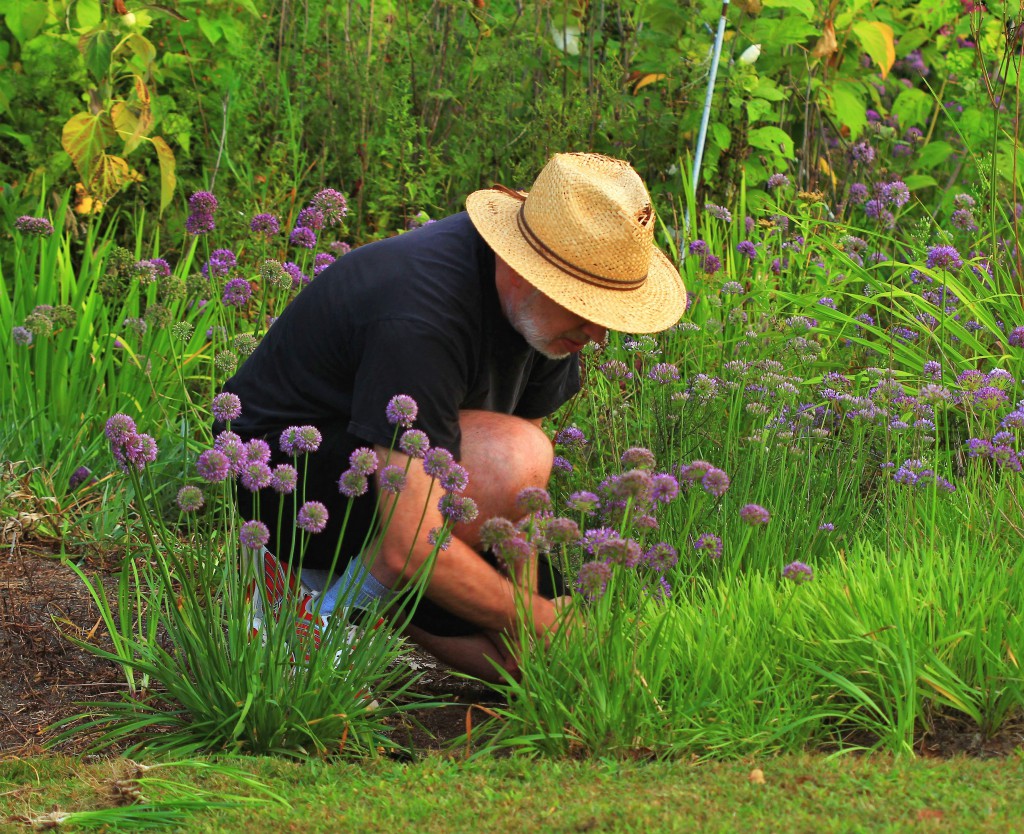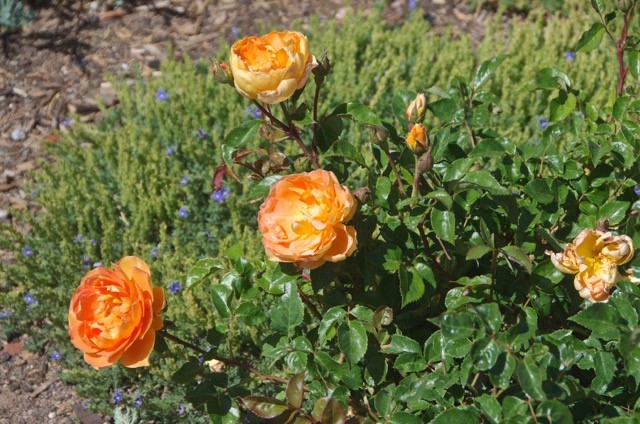August 2018
By Scott Canning, Horticulture and Special Projects Director
It is too easy to give up on the garden in August, but DON’T; “letting things go” now will make for more work in the future, and may mean weed problems for years to come. Don’t let your weeds go to seed.
 Be careful with watering, the monsoon may not be adequate. Keep your eyes on your trees, especially those newly planted. Be sure they get a deep watering once a week— don’t water lightly and frequently, as this encourages shallow roots that are more susceptible to drought. Always keep your eye on your trees, for that matter. They store carbon, provide shade and beauty, and they take the most time of all of your garden plants to establish themselves, so protect that investment!
Be careful with watering, the monsoon may not be adequate. Keep your eyes on your trees, especially those newly planted. Be sure they get a deep watering once a week— don’t water lightly and frequently, as this encourages shallow roots that are more susceptible to drought. Always keep your eye on your trees, for that matter. They store carbon, provide shade and beauty, and they take the most time of all of your garden plants to establish themselves, so protect that investment!- It’s getting too late for any hard pruning of your woody plants, but watch for the “three Ds”: Anything Dead, Diseased or Damaged should be removed as soon as spotted, on your trees and all of your garden plants.

‘Pat Austin’ roses in full bloom at Santa Fe Botanical Garden at Museum Hill (photo by Janice Tucker).
- You can continue to groom and dead-head your perennials, but it is too late to prune or deadhead roses: this late, you will encourage new growth that will not have time to “harden off” before cold temperatures arrive- they will kill anything young and tender. Back off or stop fertilizing (with a few exceptions, see “peony” and “conifer” below). Again, you want growth to begin to slow and ripen or “harden” before any fall cold snap.
- August, especially the second half of the month, is a great time to plant peonies. It’s also time to lift and divide the peonies you may already have in the garden, if the clumps are robust and you would like more plants of the same. Remember that the growing points or “eyes” should be planted just an inch or two below the soil surface. Improve the soil before planting; peonies are very long-lived and resent root disturbance, so this is your best chance to add organic matter and a slow-acting organic fertilizer. Water the peonies in, and then mulch with a few inches of an organic mulch, to keep the roots cool and moist as they settle into their new location.
Max Pixel
- Late August into September is a great time to establish new conifers or transplant them. They have hardened their top growth, but the roots will continue to grow until the soil temperature drops below 45 degrees. It is OK to use some tree fertilizer on new or transplanted conifers.
- Keep harvesting your vegetables. Think about spaces opening up, and consider if you should plant a fall crop or a cover crop. Good fall crops for August sowing include carrots, beets, arugula, spinach and radishes. Read up on cover crops; start here with info from the New Mexico Extension Service.
- Remember that your compost pile is your friend; feed it anything but weedy seeds, and keep it moist so it will “cook” properly.
- Finally, order your bulbs for fall planting. If you have never grown “species” or “botanical” tulips, you don’t know what delights await you!


